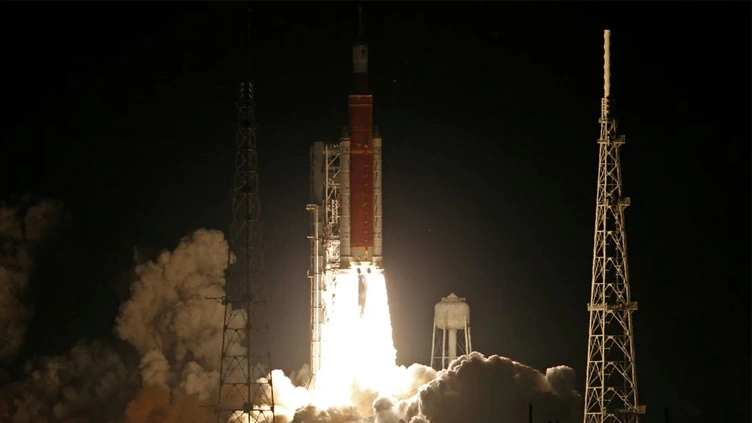CAPE CANAVERAL, Nov 16(ABC): NASA’s towering next-generation moon rocket blasted off from Florida early on Wednesday on its debut flight, a crewless voyage inaugurating the U.S. space agency’s Artemis exploration program 50 years after the final Apollo moon mission.
The 32-story Space Launch System (SLS) rocket surged off the launch pad from the Kennedy Space Center in Cape Canaveral at 1:47 a.m. EST (0647 GMT), to send its Orion capsule on a three-week test journey around the moon and back without astronauts aboard.
Liftoff came on the third attempt at launching the long-delayed, multibillion-dollar rocket, after 10 weeks beset by numerous technical mishaps, back-to-back hurricanes and two excursions trundling the spacecraft out of its hangar to the launch pad.
Dubbed Artemis I, the mission marks the first flight of the SLS rocket and the Orion capsule together, built by Boeing Co (BA.N) and Lockheed Martin Corp (LMT.N), respectively, under contract with NASA.
It also signals a major change in direction for NASA’s post-Apollo human spaceflight program after decades focused on low-Earth orbit with space shuttles and the International Space Station.
Named for the ancient Greek goddess of the hunt – and Apollo’s twin sister – Artemis aims to return astronauts to the moon’s surface as early as 2025.
Twelve astronauts walked on the moon during six Apollo missions from 1969 to 1972, the only spaceflights yet to place humans on the lunar surface. But Apollo, born of the Cold War-era U.S.-Soviet space race, was less science-driven than Artemis.
The new moon program has enlisted commercial partners such as Elon Musk’s SpaceX and the space agencies of Europe, Canada and Japan to eventually establish a long-term lunar base as a stepping stone to even more ambitious human voyages to Mars.
The Artemis I countdown climaxed with the rocket’s four main R-25 engines and its twin solid-rocket boosters roaring to life, producing 8.8 million pounds of thrust that sent the spacecraft streaking skyward and lighting up the night sky over Florida’s central Atlantic space coast.
The thunder of the rockets shook the Kennedy Space Center as a throng of spectators cheered and screamed with excitement.
Addressing mission control moments after liftoff, Artemis launch director Charlie Blackwell-Thompson saluted the hard work of her colleagues.
“You guys have worked hard as a team for this moment. This is your moment,” she said to applause. “We are all part of something incredibly special, the first launch of Artemis, the first step in returning our country to the moon and on to Mars.”
About 90 minutes after launch, the rocket’s upper stage is designed to loft Orion out of Earth orbit on course for a 25-day flight that will bring it to within 60 miles (97 km) of the lunar surface before sailing 40,000 miles (64,374 km) beyond the moon and back to Earth.
The capsule is expected to splash down at sea on Dec. 11.

